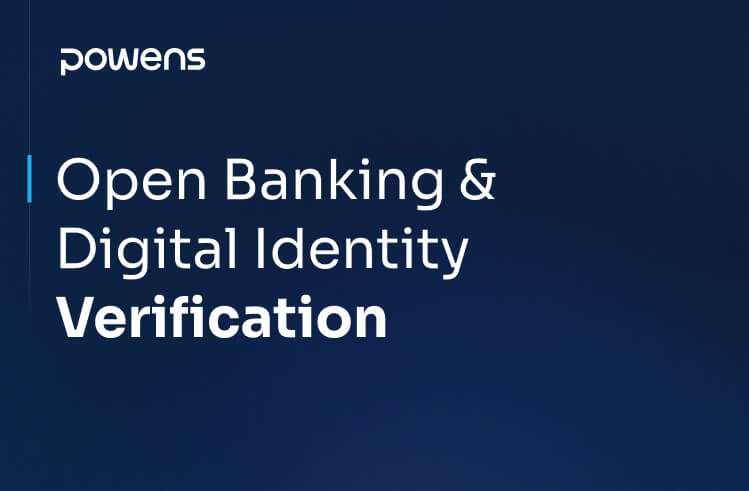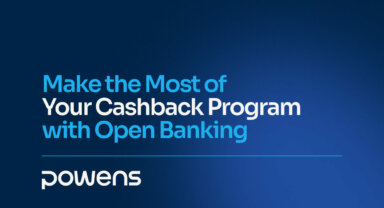Open Banking has been shaking up the financial services industry for over a decade. Enabling third-party providers to use bank customer data via APIs (Application Programming Interfaces) with the customer’s consent paved the way for new, innovative solutions and players to enter the field. With more than 11% of British consumers and 17% of small businesses already using Open Banking services in 2023, it has firmly established itself in the financial ecosystem.
Now, with the rise of digital identities — composed of various personal attributes and identifiers stored digitally — Open Banking is set to take the next step. Digital ID plays a crucial role in verifying individuals during online transactions, and the EU is actively working on rolling it out across the region. Together, Open Banking and digital identity are reshaping financial services by streamlining operations and making transactions safer.
How digital identity enhances Open Banking
Security and fraud prevention
One of the major concerns in financial services is securing personal information and preventing fraud. Digital identity helps significantly by providing more secure and reliable identity verification in Open Banking systems. Linking a user’s digital identity to their banking profile prevents unauthorized access, significantly reducing fraud risks. This becomes particularly critical when dealing with high-value transactions.
Streamlining processes
Open Banking and Embedded Finance technologies have increased security levels through digital identity integration, speeding up processes like onboarding, customer verification, and payments. Digital ID systems allow customers to be verified in no time, making it easier for businesses to comply with KYC (Know Your Customer) requirements while ensuring an excellent customer experience. Thus, this simplified process not only accelerates customer transactions but also improves customer satisfaction levels with financial institutions.
Business model innovation and opportunities
New financial products and services
The combination of Open Banking and digital identity offers financial institutions new ways to serve customers. Personalized lending, for instance, is made possible by the enhanced insights that come from this data sharing. Institutions can create identity verification services or develop more tailored lending models based on an individual’s verified identity data. This data goes beyond what lenders were typically able to obtain in traditional onboarding processes and can even include non-financial information about a person. These innovations open up new revenue streams and services, adding value to what banks and fintechs can offer their clients.
Cross-sector applications
Beyond traditional banking, digital identity has applications in sectors like insurance, healthcare, and e-commerce. With a secure and verified digital identity, consumers can use the same profile for everything from insurance claims to online shopping. This creates a more unified experience across industries, reducing the need for repeated verifications and improving overall customer convenience. It also paves the way for super apps, enabling seamless access to multiple services within a single platform.
Regulatory, privacy, and data portability challenges
Regulatory compliance
Meeting the requirements of regulations such as PSD2 (as well as the upcoming PSD3) and GDPR is one of the key challenges to integrating Open Banking and digital identity. These laws demand strict control over personal data, ensuring it’s collected, stored, and shared with user consent while maintaining transparency.
For financial institutions, this can mean adapting internal processes to meet these rules without adding friction to customer interactions. Failing to comply could result in significant fines, making it crucial for organizations to have systems that can handle these demands seamlessly.
Privacy and user control
As more personal information is shared between third parties, the issue of privacy becomes central. Users need control over how their digital identity is used and shared across platforms. Open Banking systems must ensure that data is not only secure but also that users can decide what and how much of their personal information they’re comfortable sharing. This added control helps maintain trust in the systems and gives customers peace of mind.
When handling sensitive customer data, security is of utmost importance.
Data security risks
Even though digital identity minimizes certain risks, data breaches remain a significant concern. The more sensitive data is shared, the higher the chances that such information will be misused. Therefore, financial organizations have to ensure strict levels of security to protect customers’ information, which includes regularly updating systems to rectify existing weaknesses and ensuring that all third-party vendors maintain similar levels of security.
Jean-Yves Bernard of Capital Koala, when explaining why they collaborate with Open Banking platform provider Powens, highlights exactly that, stating that bank data security is a highly sensitive issue and companies must guarantee their customers’ data will be protected and remain confidential at all times.
Building a secure financial future
The meeting point of Open Banking and digital identity is driving significant changes in financial services. Combining enhanced security with streamlined operation means that institutions can take advantage of new business opportunities, without compromising on speed, safety, or personalization of services. With adoption rates continuing to rise in Europe, especially in sectors beyond traditional banking, the innovation potential is massive.
Digital identity doesn’t just verify individuals –– it creates the necessary trust to drive future generations of financial products and services. It has also changed how businesses and customers interact, with a more transparent, efficient, and secure financial ecosystem.
How to get started with Open Banking and Powens
At Powens, we’re proud to enable financial institutions, Fintechs, and software vendors across Europe and LATAM to create innovative products and streamline their financial operations with the only platform that integrates Open Finance and Embedded Banking.
Our Open Banking Platform empowers more than 280 leading financial institutions and 7 million end-users with comprehensive embedded, frictionless, and fully automated banking and payment experiences.

 Jan 22, 2024
Jan 22, 2024 














